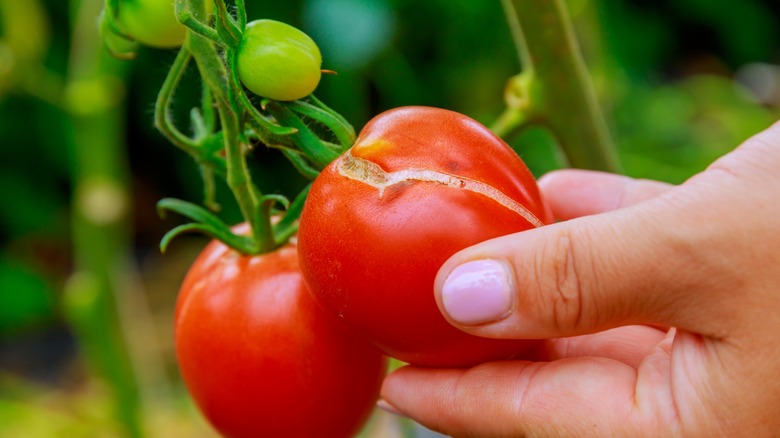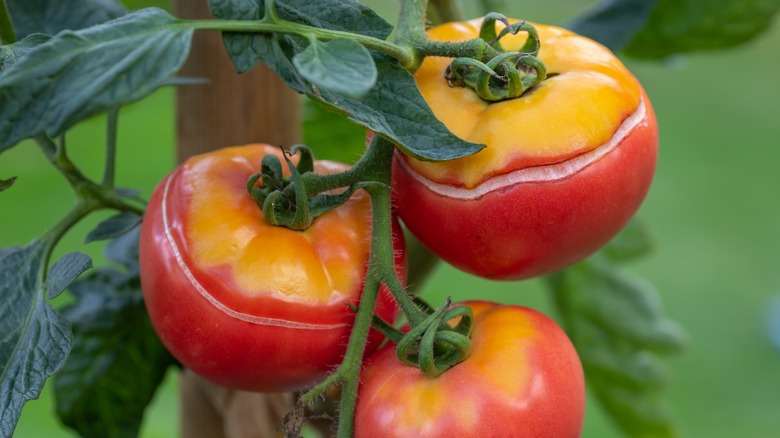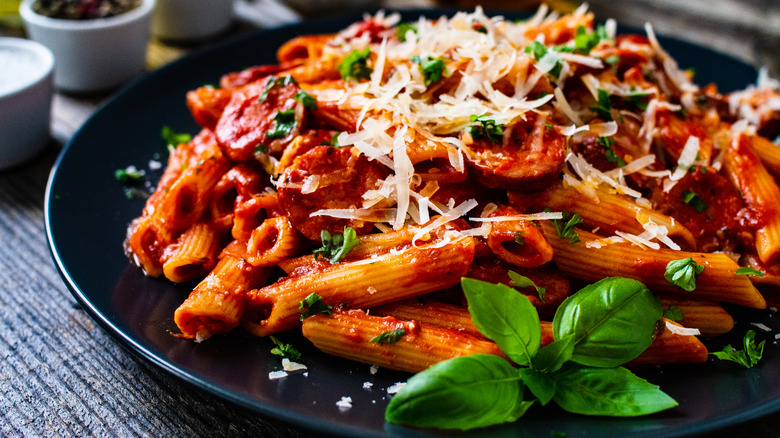Are Split Tomatoes Still Safe To Eat?
Imagine coming home with a bag of tomatoes, eager to make a salad, bruschetta, or other savory goodies. But as you wash the tomatoes, you find a few that are cracked or split. Should you go ahead and eat them or toss them in the compost bin? The answer depends on what the tomatoes look like. If they're soft and mushy or have moldy spots, then it's better to discard them.
Like other fruits, tomatoes can crack and split as they ripen due to heavy rain, temperature fluctuations, or sudden changes in soil moisture. The same can happen when humidity levels are higher than normal. These problems may result in radial or concentric cracks on the fruit surface.
The cracks are often small and superficial, but sometimes they can develop mold, bacteria, or yeast. In such cases, the fruit may not be safe to eat. However, for the most part, split tomatoes are edible and can add flavor to stews, sauces, homemade pizza, or casseroles.
Cracked tomatoes are not always safe to eat
Split or cracked tomatoes don't normally pose health risks, but there are cases where they could make you sick. For example, if the fruit is treated with pesticides or herbicides, these chemicals can slip through the cracks and contaminate its flesh. That's not the case with organic tomatoes, which should be safe to eat unless they have signs of mold, rot, or disease.
Generally, it's recommended to closely examine any tomatoes with splits or cracks. If the fruit looks firm, plump, and smells fresh, then it should be perfectly edible. Check the cracks for moldy or mushy spots and other signs of decay. If you see any, discard the tomatoes. Bacteria can enter through the split and multiply, which may lead to foodborne diseases.
On a similar note, you should discard any tomatoes with blossom-end rot, black holes, or flattened spots with a bull's-eye appearance. These are signs of decay and could pose health risks. For example, fruitworms can attack the tomato and dig tunnels through its flesh, rendering it inedible. But if the fruit has a "clean" split with no signs of rot, mold, or yeast, you can just cut around it and eat the tomato.
Creative ways to use split tomatoes
Split tomatoes are just as flavorful and nutritious as their healthy counterparts. You can use them in salads, sandwiches, or cooked meals, or eat them with a pinch of salt. If the split is big, cut it off and use the remaining flesh to make sauces, marinades, jams, or other dishes that don't require whole tomato pieces.
For instance, this fresh tomato and bacon ketchup recipe calls for five to six large plum tomatoes, two to three large shallots, garlic, and other ingredients. Dice the split tomatoes, and then follow the cooking instructions. It's a perfect way to mask those unsightly blemishes and reduce food waste. Similarly, you can add split or cracked tomatoes to pasta dishes, soups, curries, or infused oils.
Another option is to roast them with other vegetables, garnish them with dill, oregano, or basil, and serve them as a side dish. For a quick snack, slice and dehydrate the tomatoes, add seasonings, and then store them in an airtight container. Split tomatoes can also be a wonderful choice for the infamous Bloody Mary or other savory cocktails, such as the Red Snapper, Michelada, or Lovage in the Garden.


